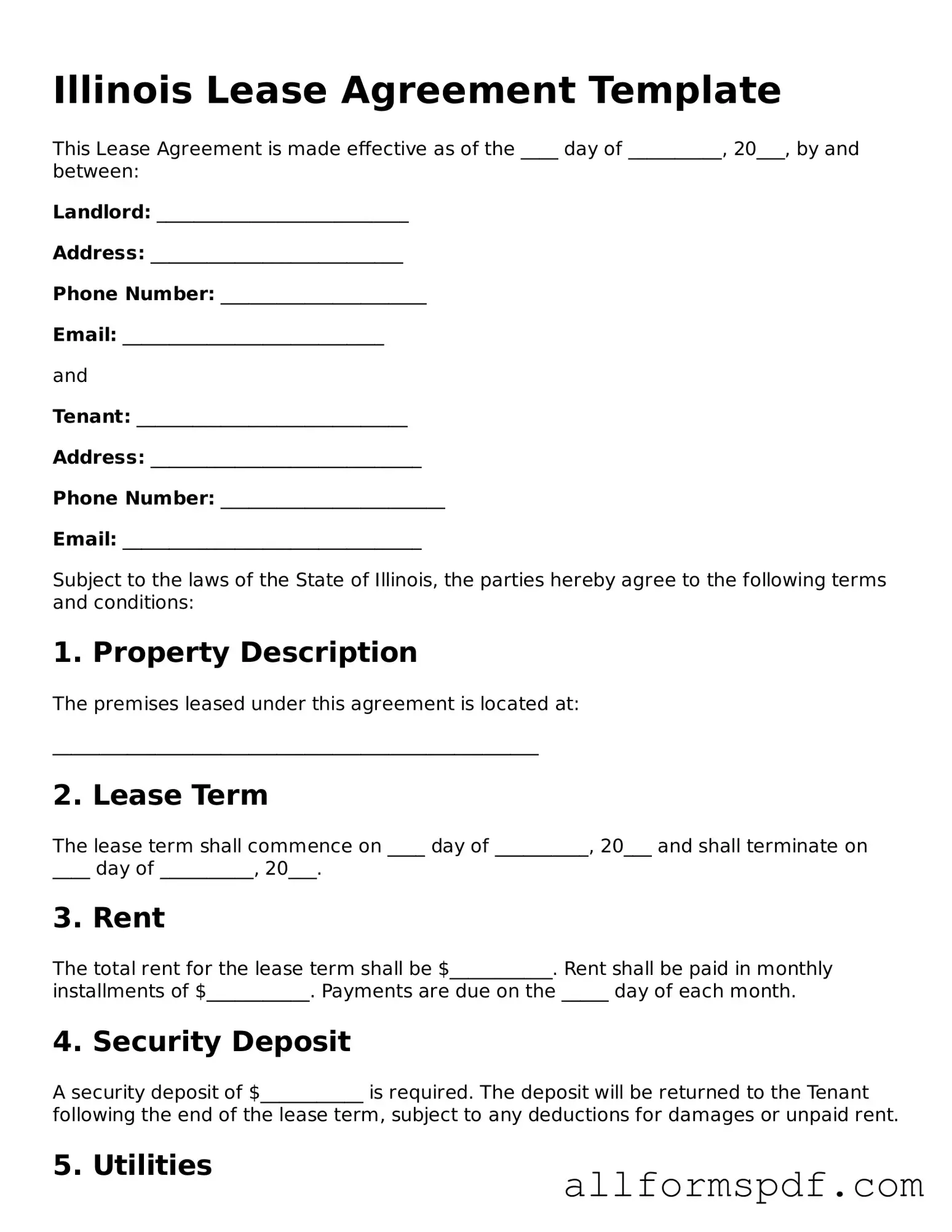When filling out the Illinois Lease Agreement form, many individuals make common mistakes that can lead to misunderstandings or disputes later on. One frequent error is failing to provide accurate tenant and landlord information. It's crucial to include the full names and contact details of all parties involved. Incomplete or incorrect information can complicate communication and legal obligations.
Another mistake is neglecting to specify the lease term. The lease should clearly state the start and end dates. Without this information, both parties may have differing expectations regarding the duration of the tenancy. This oversight can lead to confusion and potential legal issues if either party wishes to terminate the agreement prematurely.
People often forget to outline the rent payment details. The agreement should specify the amount of rent, the due date, and acceptable payment methods. If these details are vague or missing, it can result in late payments or disputes over the amount owed. Clarity in financial obligations is essential for a smooth landlord-tenant relationship.
Security deposits are another area where mistakes commonly occur. The Illinois Lease Agreement must include the amount of the security deposit, the conditions for its return, and any deductions that may be taken. Failing to address these points can lead to disagreements when the lease ends, especially regarding the condition of the property.
Lastly, many individuals overlook the importance of including additional terms and conditions. While the standard lease covers basic elements, specific rules about pets, maintenance responsibilities, or property alterations should be clearly stated. Omitting these details can lead to conflicts and misunderstandings as the tenancy progresses.
